When you work with partners to manufacture and supply engine components for commercial vehicles or other applications, you probably have your list of those you use frequently, perhaps some of them your company has worked with for years. However, making a choice based on “the way it’s always been done” is not usually the best for business. While building long lasting relationships with vendors certainly benefits all parties, it’s wise to continuously revisit and adapt to these relationships over time. As your company grows and your needs change, or the vendors themselves change, always ask whether you’re making the right choices for your business and your customers.
Take a look at your current suppliers and ask whether your purchasing or engineering department is experiencing any frustrations. Are they less responsive to questions than you need them to be, are deliveries taking too long, or has the quality dropped? If, for these reasons or others, you find that it’s time to explore other suppliers, weigh these five factors in your selection process.
1. Total Cost
Meeting budget demands often takes priority over everything else. Keep in mind that cost comprises more than just the price of the parts. Consider all the associated costs:
- Development
- Tooling
- Prototyping
- Validation cost
- Assembly kit
Also consider the supply chain and logistics of getting the products to you within the timeframe you need. Lost time on a project can translate to higher costs.
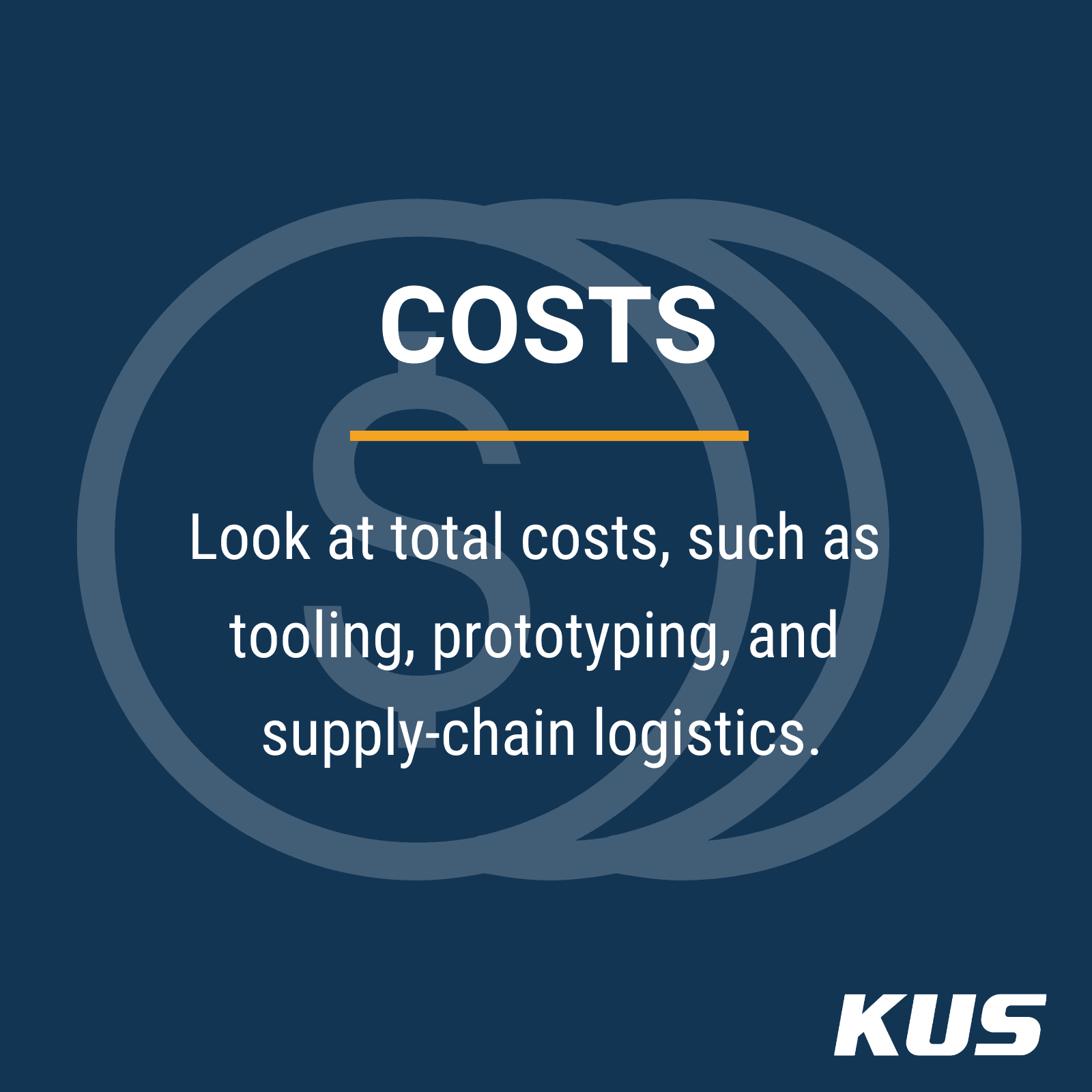
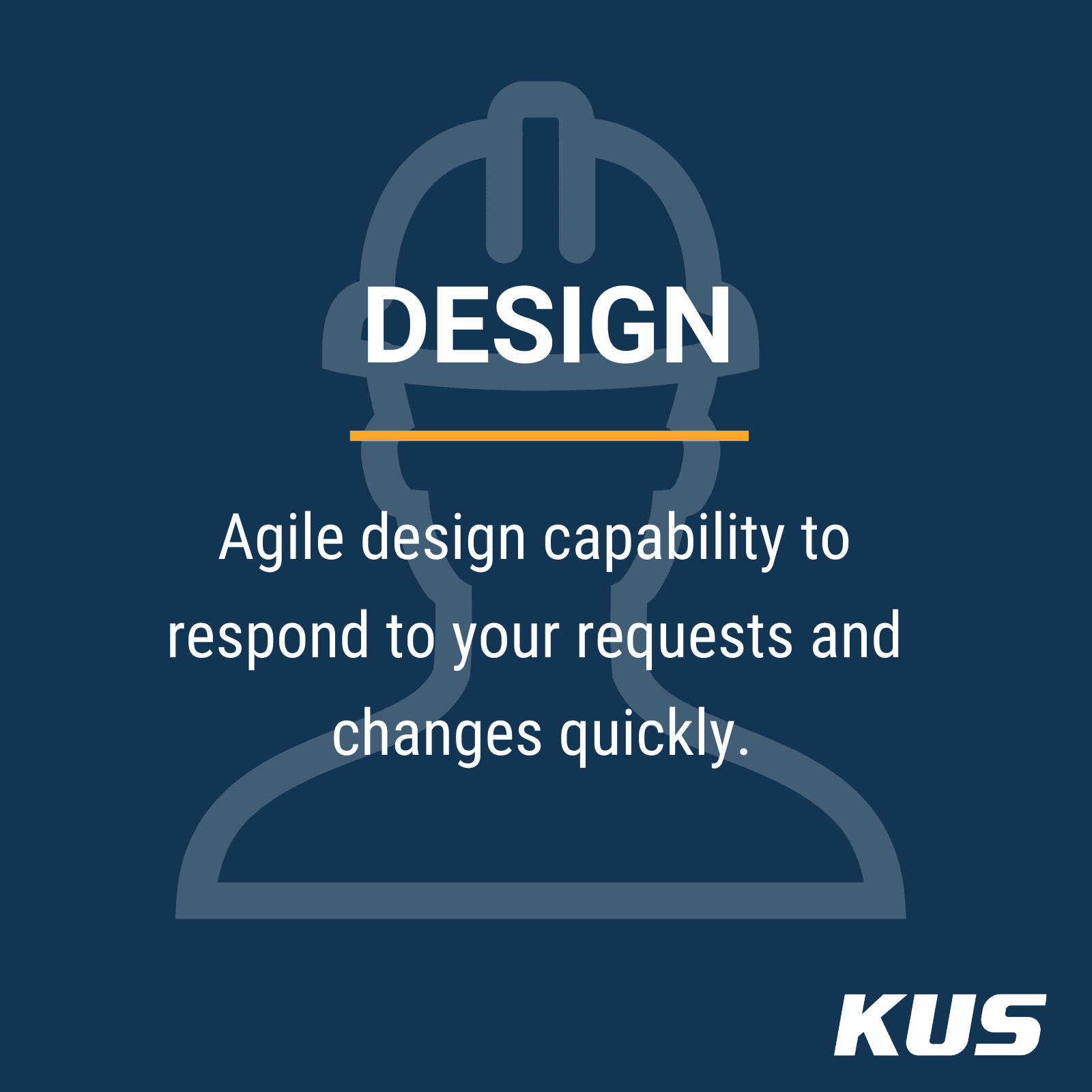
2. Engineering Expertise
Your manufacturer of choice needs the expertise to turn your design department’s ideas into reality through engineering. Their engineering department must be large and experienced enough to tackle developing whatever new products you present to them. On the other hand, it has to be agile enough to implement any changes or requests swiftly.
When components of an assembly are made by different companies, you can run into frustrating issues with fit, function, or performance. When one company makes all the components for a system, they can control each part to make sure they fit and work properly as an assembly.
Another consideration is whether your supplier handles software engineering in-house or outsources it. Outsourced software engineering can be very expensive and have long lead times. Managing it in-house gives the supplier flexibility to quickly adjust around customer demands.
If a company designs parts but does not fully understand the manufacturing process and capabilities, then the parts may not measure up in the field. By choosing an OEM with a high level of knowledge and experience, you potentially save a lot of time and hassle
3. Manufacturing Capability
Sometimes your choice simply comes down to whether the manufacturer is capable of executing what you need. More complex products require integration of multiple manufacturing processes and longer production lead time.
You will most certainly look for proper certifications. Most OEMs demand that their suppliers are ISO certified and many are now requiring the IATF19649 certifications. Without this assurance you run the risk of quality issues with your products.
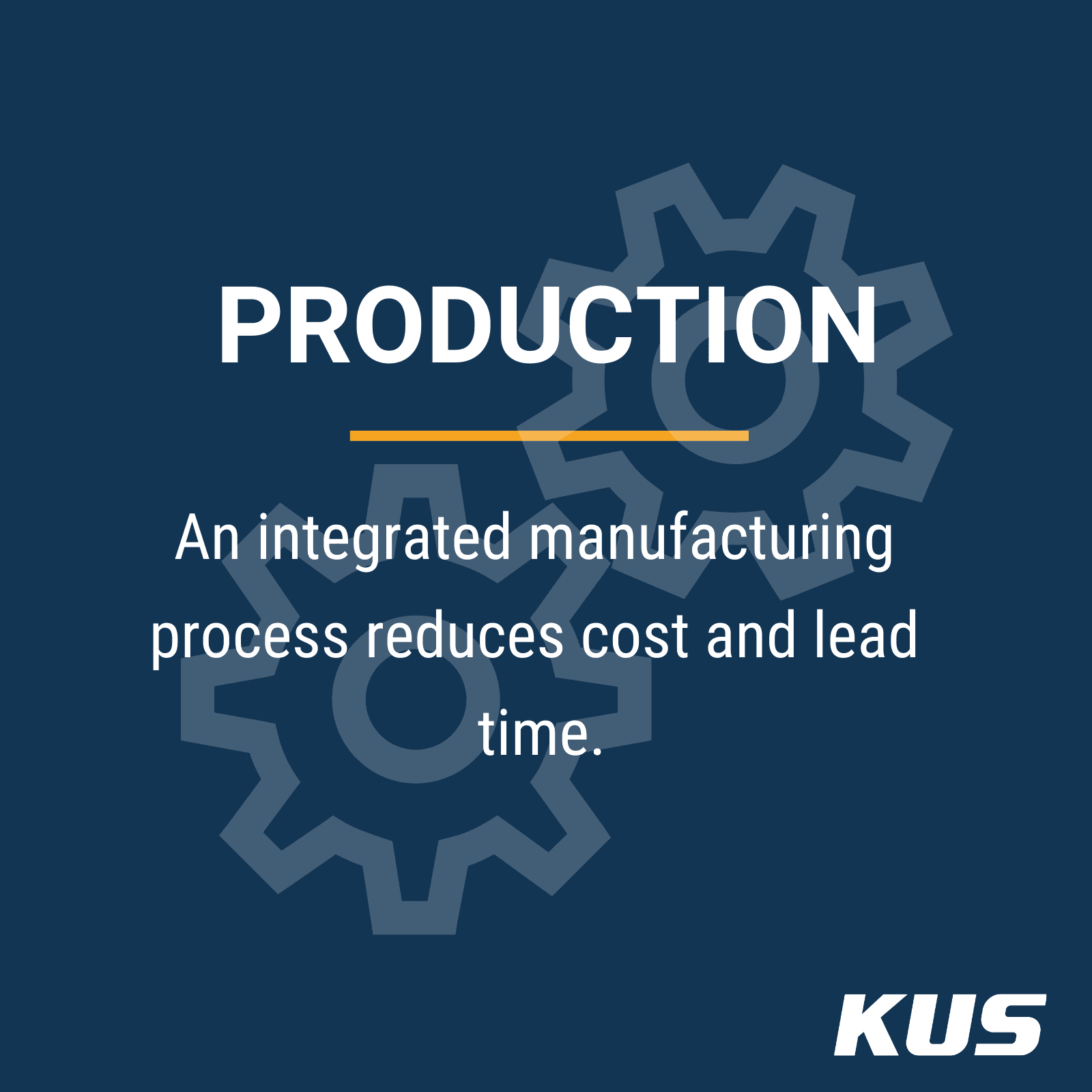
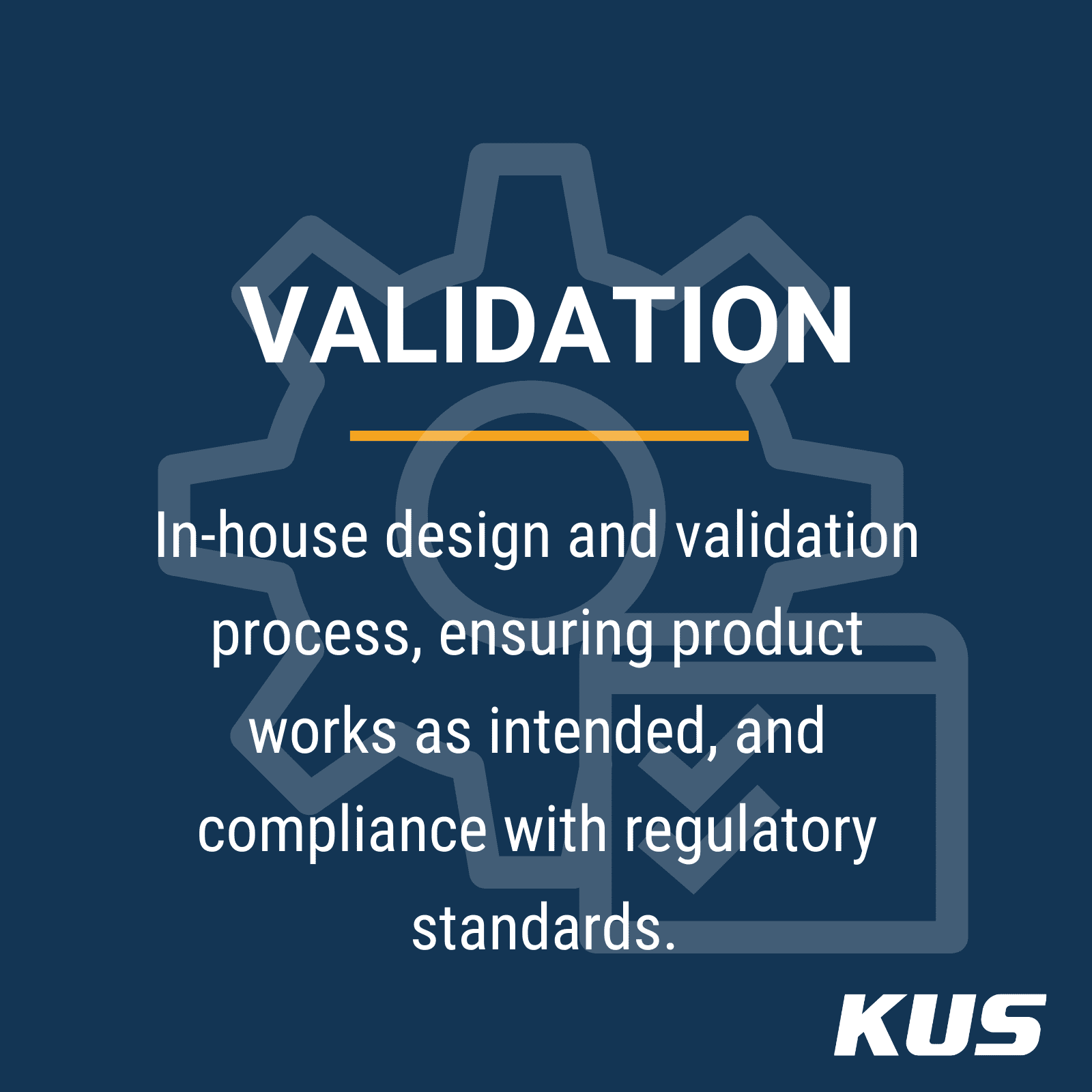
4. Development Support
Field testing is crucial to verify the durability and resilience of components under real life conditions. Simulating these conditions in a lab helps ensure that your parts will survive in the field and that they meet quality standards. The necessary costs associated with testing can make a big impact on the overall project budget.
When choosing a supplier, look for one that conducts testing in-house. In-house testing can save you money and produce a better outcome. Outsourced testing labs are not only more expensive, but often lack the necessary expertise on the products that they are testing.
5. Localized Distribution
You need to make sure the final products can get to you or your customer’s warehouse in a timely manner. A local contact can help with any supply, quality, or warranty issues. For example, production quantities may change within a few days of the ship date so companies must have stock and resources ready to support such quick changes.
Look for a supplier who understands customer requests, especially in engineering development, which is critical when making custom parts. The supplier must be able to clearly understand the requirements and apply them to the product.
Using a local manufacturer can also reduce freight cost. Shipping a large product overseas can be very costly for OEMs.

Reasons to Make KUS Your Supplier of Choice
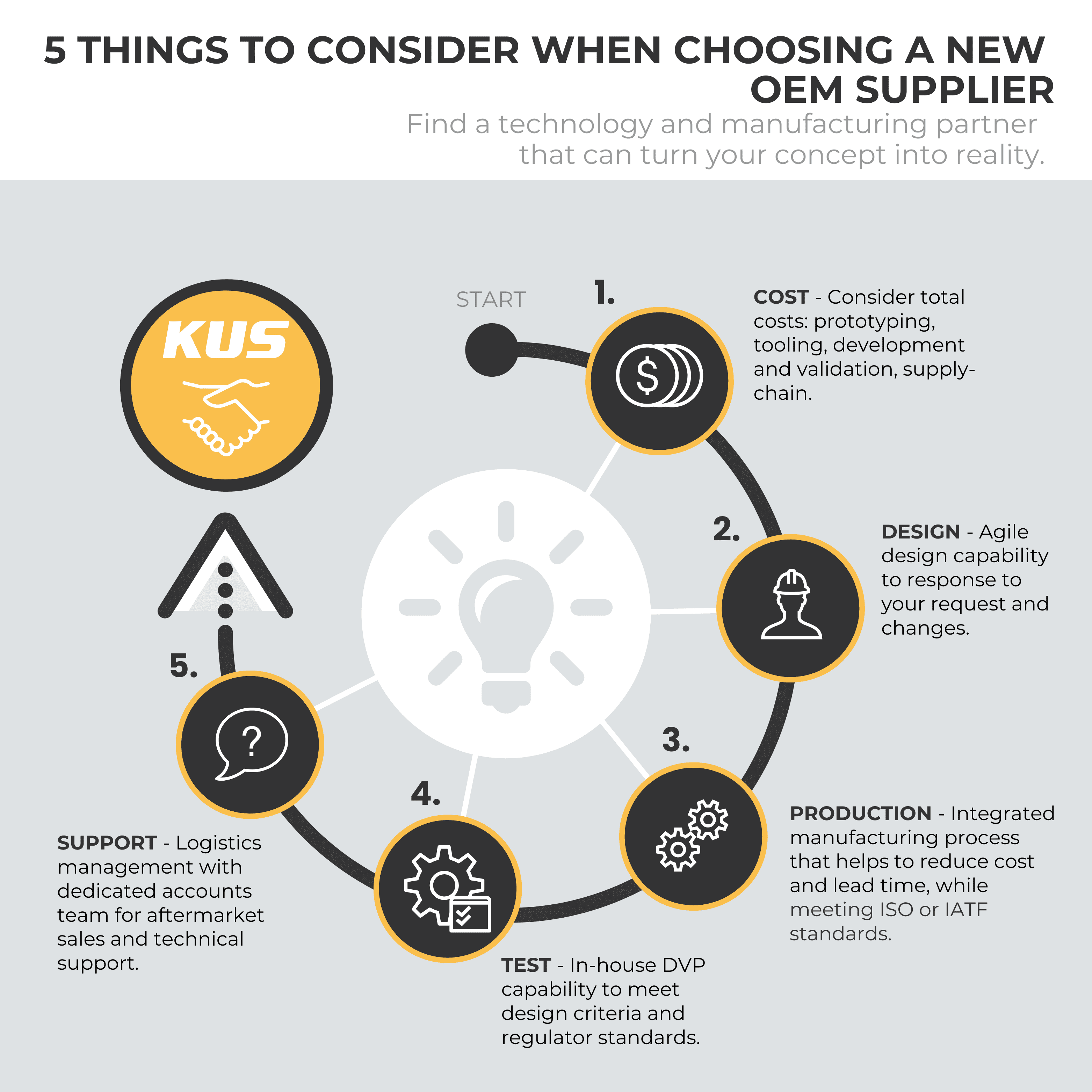
When you compare suppliers, weigh all five of the points above. KUS can meet or exceed your needs in each area.
KUS has its own in-house tooling workshop, fast 3D prototyping, and a dedicated team to support throughout the product life cycle. You get logistics, customer service, quality, and project management all in one place. Integrated manufacturing processes reduce costs and lead time from outsourcing procedures.
Our agile team of engineers can respond quickly to design and change requests. They can handle:
- Design for manufacturing
- Mechanical engineering
- Electrical engineering
- Software engineering
For testing and validation, you can count on our internationally accredited in-house lab. Count on quality control for ISO 9001 and IATF 16949. When you add up the cost savings and long term value, you can see how your investment measures up with KUS versus other suppliers.
Contact your nearest KUS office to get started on your next project.
